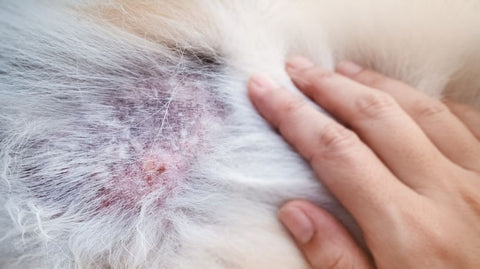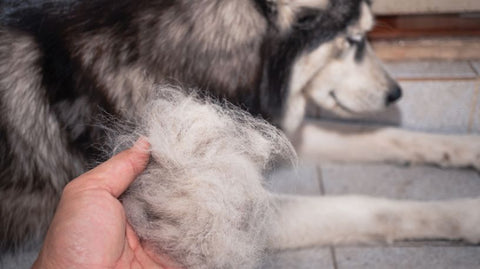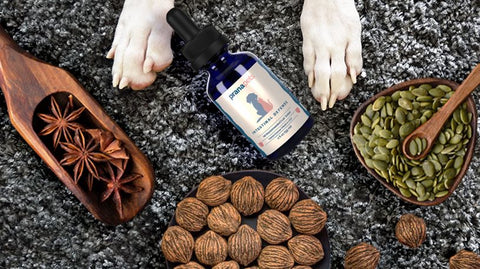

Understanding Fleas and Their Life Cycle
Fleas undergo a complete metamorphosis from egg to adult. Female fleas lay eggs on the host that falls off onto surfaces. These eggs hatch into larvae that feed on organic matter in the environment. Larvae develop into pupae, where they encase themselves in cocoons. After some time, adult fleas emerge and seek out a host for blood meals. Understanding these stages is crucial in combating flea infestations effectively.
The Basics of Fleas
Fleas, tiny parasites with remarkable jumping abilities, feed on blood and go through distinct lifecycle stages. Understanding their unique survival mechanisms is crucial. These pests can travel long distances by hitching a ride on pets' fur. Identifying signs of a flea infestation, like flea poop on pet bedding or carpeting, is essential for pet owners to maintain cleanliness and prevent blood loss. Female fleas can lay eggs in a pet's skin, leading to itching and welts. Regular vacuuming and cleaning are the best ways to combat these pesky intruders.
Typical Flea Life Cycle
Understanding the life cycle of fleas is crucial for effective pest control. Fleas evolve from eggs to larvae, then pupae, and finally adult fleas. This transformation involves distinct developmental stages, including metamorphosis processes. Knowing these phases aids in identifying and tackling flea infestations promptly.
Identifying Flea Infestations
Spotting signs of a flea infestation involves watching for unusual pet behavior, like excessive scratching. Check for tiny black dots on pet bedding, known as flea poop, a common indicator. Using a paper towel, look for red or black specks, which could be flea dirt. Pet owners should inspect their pets' skin for red welts or areas of hair loss. Fleas can spread diseases and cause blood loss in pets. Detecting fleas early is crucial to prevent further infestation.
Recognizing Flea Infestation Signs in Pets
Pets may show signs of discomfort, such as excessive scratching, signaling potential flea infestation. Skin irritation and behavioral changes in pets could also point towards flea presence. Recognizing these signs promptly is vital for effective treatment and ensuring your pet's well-being. Observing these subtle cues can help in early detection and addressing the issue before it escalates.
Spotting Flea Signs in the Home
When checking for signs of fleas in your home, start by inspecting your pet's usual areas for flea dirt. Flea bites on humans could be a red flag for an infestation. If you spot fleas on carpets or furniture, it's a clear indicator. Discovering flea eggs or larvae indoors is a sign of infestation. Thoroughly examining your surroundings is crucial to identify any signs of a flea infestation.
Can Fleas Infest Even Without Pets?
Fleas may invade homes through avenues like rodents or objects. Factors like environment aid in infestations. Fleas thrive indoors sans pets, surviving and multiplying stealthily. Unknowingly, homes can turn into flea habitats even without animal companions present. Flea infestations persist in indoor settings

Interpreting Flea Bites
Flea bites on pets often appear as small, red bumps and can cause itching. These bites are commonly found on the pet's abdomen, lower back, and legs. Scratching due to flea bites can lead to hair loss and skin irritation. Identifying flea bites is crucial to addressing infestations promptly.
What Do Flea Bites or Welts Look Like?
Flea bites typically manifest as small, red bumps on the skin. They can look very similar whether they are on a human or a dog or cat. Their appearance may vary among individuals and often form clusters. Itching and redness are common symptoms associated with flea bites. Identifying them by their itchy, raised nature is crucial.
Possible Complications from Flea Bites: Scratching, Worms, and more
When flea bites occur, they can trigger allergic reactions in certain individuals. Excessive scratching of these bites may lead to infections, while severe itching can cause damage to the skin. In some instances, flea bites have the potential to transmit diseases, emphasizing the importance of recognizing and addressing possible complications arising from flea bites.
The Places Fleas Call Home: Bedding, Carpeting, etc.
Fleas tend to make themselves comfortable in various places. They often set up homes in the warm and cozy nooks of your furry companions, such as in your pets’ fur or bedding. Additionally, fleas can hide in carpets, waiting to pounce on their next victim. These sneaky pests can also be found lurking in cracks and crevices around your home, making it crucial to thoroughly clean and treat your living spaces to evict them for good.
Flea Habitats in Pets
Keeping your pet’s comfort in mind, be watchful of their neck and tail base for sneaky fleas. Any redness or scratching on their skin might signal unwelcome guests. Flea larvae may lurk in their cozy bedding, so inspect diligently. Hair loss or pale gums could hint at an infestation. Grooming your pet regularly aids in early flea detection, promoting a healthy environment.
Other Potential Flea Hotspots
When looking for other potential flea hotspots, remember to vacuum pet bedding and areas where pets spend time. Using a flea comb can help check for adult fleas or flea dirt. Since fleas can lay eggs on your pet, leading to an infestation, washing your pet with warm water can drown fleas. Always keep an eye out for flea eggs or larvae, especially on white socks.
Nipping the Problem in the Bud - How to Get Rid of Fleas
Vacuum cleaners are an effective tool to combat fleas in your home. Regularly cleaning pet bedding and areas helps eliminate flea eggs and larvae. It’s essential to address the root cause by treating both pets and surroundings. Removing flea poop with a paper towel can aid in controlling infestations. Utilizing insecticides specifically designed for flea control is often the best way to eradicate them effectively. Protecting your pet's skin and body from future infestations is crucial. There are even a few good natural options for eradicating fleas from your pet, home and yard.
Home Remedies for Fleas: Goodbye Pest!
There are many home remedies for dealing with fleas. Opt for a natural flea spray by blending essential oils with water, creating an effective solution. Utilize diatomaceous earth on carpets to eliminate fleas by dehydration. Sprinkle salt on carpets, and after a few days, vacuum thoroughly to eradicate fleas. Employ a flea trap method with a light positioned over soapy water in a pan. Keep pet bedding clean by frequently washing in hot water to exterminate fleas effectively.
Importance of Maintaining Cleanliness
To keep your home flea-free, ensure diligent cleaning routines. Use a vacuum cleaner regularly to eliminate fleas and their eggs. Outdoor areas need attention too; tidy surroundings discourage flea habitats. Regular pet baths are crucial – clean pets mean fewer fleas. Decluttering is key; remove hiding spots for pests. Cleanse pet toys and accessories with hot water to kill any sneaky fleas.
When to Seek Professional Help
If dealing with persistent flea issues, reaching out to professional pest control is advisable. For severe infestations, consulting a vet is key. Professional exterminators excel in eradicating fleas effectively. When DIY methods fall short, seeking expert help is wise. Regular pest control maintenance can thwart future infestations.

Flea Prevention - Better Safe Than Sorry
Remember, prevention is the key to keeping these pesky pests at bay. Regularly using a vacuum cleaner on carpets and pet bedding can help eliminate flea eggs and larvae. Ensuring your pets' skin and fur are clean and healthy can deter fleas from making a home on them. Checking for signs of a flea infestation and promptly addressing any issues is crucial for a flea-free environment. By taking preventive measures, you can protect your pets and home from these unwelcome intruders.
Preventive Measures for Pet Owners
To safeguard your pets, consider using flea collars or spot-on treatments. Maintain cleanliness by routinely washing pet bedding and toys to deter flea breeding. Outdoor flea habitats can be reduced by keeping your yard well-kept. Adhere to your vet's recommendations on flea preventive treatments. Stay vigilant by frequently bathing and grooming your pets to detect fleas promptly.
Preventive Measures for Homes and Yards
To keep your home and yard free from fleas, ensure to vacuum regularly to eliminate flea eggs and larvae. Wash your pet's bedding in hot water to eradicate fleas effectively. Using flea sprays or foggers can provide a thorough treatment for your home. Trimming shrubs and mowing the lawn help in reducing flea populations. Additionally, keeping outdoor areas well-lit can discourage fleas from infesting your yard.
Dealing with Persistent Flea Problems
To tackle persistent flea problems effectively, it's essential to grasp the flea life cycle intricacies. Keeping your pet's bedding clean is a preventive measure against flea infestations. Opting for a recommended flea collar or spot-on treatment aids in combating fleas. Frequent vacuuming helps eradicate flea eggs and larvae from your home environment. Seeking advice from a vet ensures you choose the most suitable flea treatment for your pet's well-being.
When to Seek Veterinary Help for Your Pet
If your furry friend displays signs of flea allergies, consulting a vet is crucial. Excessive scratching or hair loss could point to a significant flea issue. Keep an eye out for pale gums or hives, indicating a severe flea infestation. Anemia in pets might be linked to flea problems, so veterinary advice is key. Suspecting tapeworms from fleas? Seeking professional help for your pet is a wise choice.
Are Fleas Still Hopping Around in Your Home?
Check for adult fleas in your pet's fur and bedding. Look for signs of flea dirt, bites, or eggs in their vicinity. Flea infestations may trigger allergies in pets and humans. Early identification is key to preventing a worsening infestation.
Conclusion
Flea infestations can be a nuisance, but early detection is key to tackling the issue effectively. By understanding fleas' life cycle and recognizing signs of infestation in pets and your home, you can take prompt action. Remember, cleanliness plays a vital role in flea prevention. If you suspect an infestation, consider both home remedies and professional assistance. Stay proactive in protecting your pets and home from these pesky pests. With vigilance and the right approach, you can nip flea problems in the bud and enjoy a flea-free environment for you and your furry friends.







